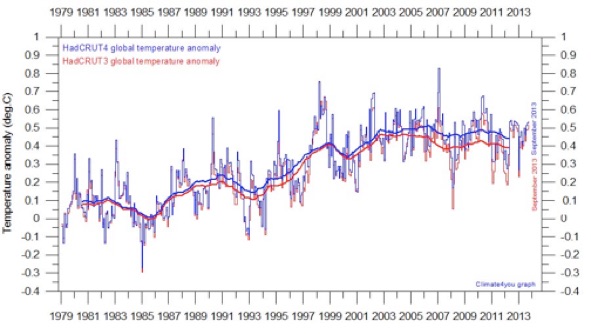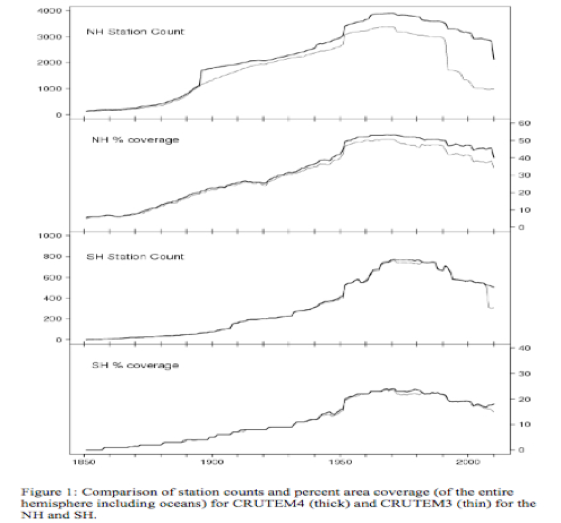



The Problematic Transition to HadCRUT 4 from HadCRUT 3
In March 2012, an update to the World Temperature data set of the Hadley Climate Research Unit of Great Britain’s University of East Anglia (HadCRUT4) was introduced.
In addition to 125 new reporting stations in northern Russia, northern Canada and Alaska, data from Greenland, Denmark, and the Alps, were also added, all in all totaling over 400 additions to HadCRUT4 vs. HadCRUT3, and some of those stations were clearly affected by local urban heat island (UHI) effects. Only 8 new Southern Hemisphere temperature stations were added to the HadCRUT4 database, at least 3 of which were within 20 degrees of the equator and the imbalance between the numbers of new stations for the NH and SH resulted in an upward bias in reported temperature trends between HadCRUT4 and HadCRUT3.
This upward bias is also augmented by the fact that existing Antarctic stations are reporting colder temperatures. The NH is warming faster than the SH for a number of reasons, including the basic fact that the NH has 41 percent land coverage (68% of land surface area) compared to the SH 19 percent land coverage (32% of land surface area), and land area warms more quickly under solar insolation.
No inaccuracy results here, just an upward “translation” in the mathematical sense that boosts reported temperatures. The HadCRUT4 is still preferred for accuracy compared to GISTEMP or other temperature data sets, as HadCRUT4 does not interpolate between stations over unmonitored areas. Thus its data can be validated and traced back to actual station readings. Also, the HadCRUT4 database provides the longest available thermometer record of yearly average global surface temperatures (30 years longer than any other), a feature important to extraction of the long-term CO2 climate sensitivity effects from the temperature data.
Here’s the map of station additions:

Here’s the temperature anomaly data set difference between HadCRUT 3&4

And here’s the hemispherical station comparison:
